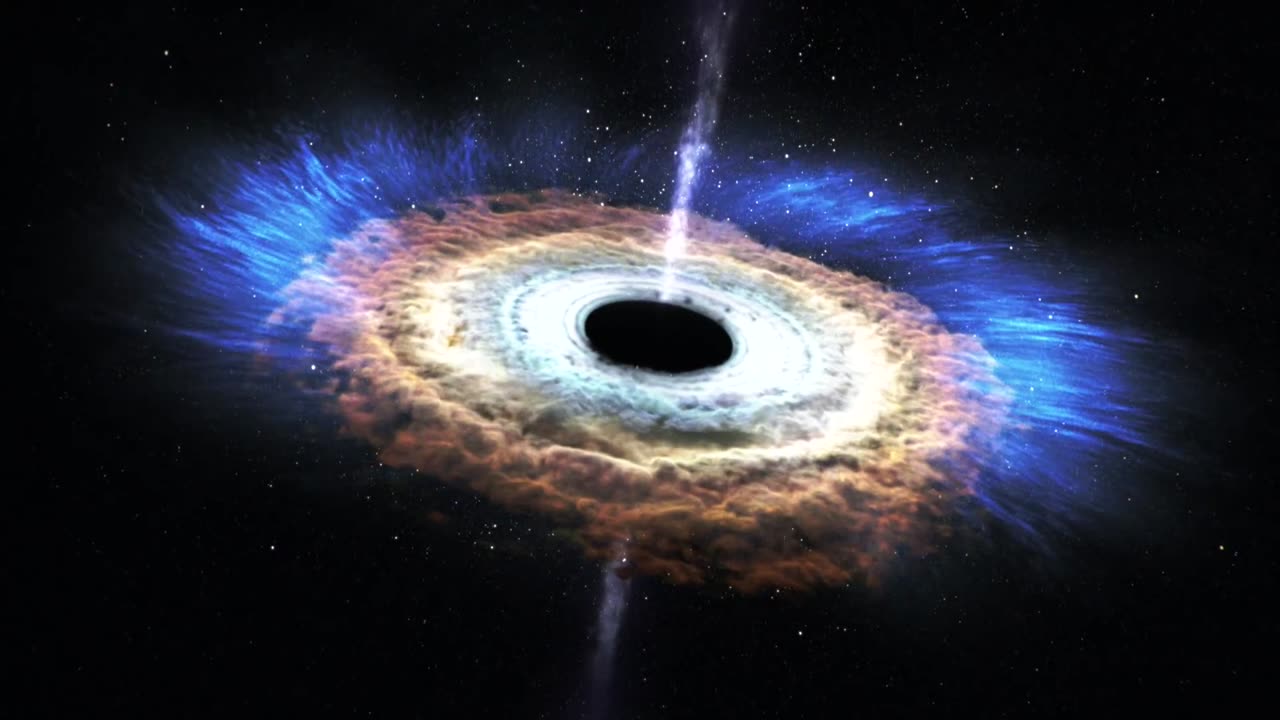Premium Only Content

Massive Black hole shreds passing stars
NASA | Massive Black Hole Shreds Passing Star
6.2M views · 7 years ago...more
NASA Goddard
1.5M
Subscribe
17K
Share
Save
Report
Comments902
Arouba Kamal
Add a comment...
All
Black holes
Galaxies
Related
For you
Recently uploaded
Watched
Up next
8:25
The Secret Behind 369 Code | The Signature of Allah | Most Mysterious Numbers in Quran
Infomentry•357K views
0:30
Black Hole Edit 4K | voice credit - @AstroKobi
77Unknxwn•4.2K views
35:15
1000 Rupees SE 50 Hazar Rupees Bana | Episode 1
Waqar Zaka•447K views
2:29
Psyche Mission Charting a Metallic World by Nasa
wrap Info
New
18 views
3:30
I Jumped From Space (World Record Supersonic Freefall)
Red Bull•11M views
1:44
NASA Sizes Up the Universe’s Biggest Black Holes
thebhp•8.1K views
2:39
Black Holes in Space – An Abstract Journey
Reels & Music Videos •293 views
10:35
Earth's Evolution in 10 Minutes
What If•721K views
5:56
Black Holes Explained – From Birth to Death
Kurzgesagt – In a Nutshell•22M views
0:52
Finally, NASA sees a Black Hole eating a star! #shorts
Curious Plus•29K views
28:58
HOW IT WORKS: The International Space Station
DOCUMENTARY TUBE•106M views
0:41
Black Hole SpaceEngine
TheGalaxGame•3.8K views
Description
NASA | Massive Black Hole Shreds Passing Star
NASA Goddard
17K
Likes
6,239,009
Views
2015
Oct 21
This artist’s rendering illustrates new findings about a star shredded by a black hole. When a star wanders too close to a black hole, intense tidal forces rip the star apart. In these events, called “tidal disruptions,” some of the stellar debris is flung outward at high speed while the rest falls toward the black hole. This causes a distinct X-ray flare that can last for a few years. NASA’s Chandra X-ray Observatory, Swift Gamma-ray Burst Explorer, and ESA/NASA’s XMM-Newton collected different pieces of this astronomical puzzle in a tidal disruption event called ASASSN-14li, which was found in an optical search by the All-Sky Automated Survey for Supernovae (ASAS-SN) in November 2014. The event occurred near a supermassive black hole estimated to weigh a few million times the mass of the sun in the center of PGC 043234, a galaxy that lies about 290 million light-years away. Astronomers hope to find more events like ASASSN-14li to test theoretical models about how black holes affect their environments.
During the tidal disruption event, filaments containing much of the star's mass fall toward the black hole. Eventually these gaseous filaments merge into a smooth, hot disk glowing brightly in X-rays. As the disk forms, its central region heats up tremendously, which drives a flow of material, called a wind, away from the disk.
-
 8:22
8:22
DropItLikeItsScott
1 day ago $0.29 earnedThis IS one of the Greatest AR's EVER! The Nemesis by Special Ops Tactical
5.27K2 -
 2:42:30
2:42:30
TimcastIRL
12 hours agoKash Patel CONFIRMED, Deep State PANICS, Mitch McConnell To RETIRE w/ Kevin Smith | Timcast IRL
207K401 -
 1:04:47
1:04:47
Candace Show Podcast
17 hours agoBecoming Brigitte: The Epilogue
166K184 -
 3:43:51
3:43:51
Alex Zedra
11 hours agoLIVE! Come Play WoT with me!
68K13 -
 5:22:49
5:22:49
Drew Hernandez
20 hours agoDOGE EXPOSES $2 BILLION SCHEME LINKED TO STACEY ABRAMS?!
90.4K129 -
 1:27:59
1:27:59
Kim Iversen
15 hours agoRFK Jr Declares No More Cheetos on Welfare? | Yale Confirms Long Covid Is Actually Vaccine Injury!
131K144 -
 1:08:43
1:08:43
The Charlie Kirk Show
12 hours agoTHOUGHTCRIME Ep. 74 — Charlie's Campus Return? Robo-Butlers? Garden of American Heroes?
112K22 -
 1:09:53
1:09:53
Slightly Offensive
12 hours ago $10.80 earnedIs the US Headed for MORE WAR Under TRUMP? | Guest: Scott Horton
63.7K20 -
 58:29
58:29
The StoneZONE with Roger Stone
12 hours agoRoger Stone Hails Confirmation of Kash Patel, Trashes Schiff for Attacks On Patel | The StoneZONE
72.2K23 -
 48:44
48:44
Man in America
17 hours agoA MASSIVE Global Financial Reset Is Coming—Are You Ready?
59K28